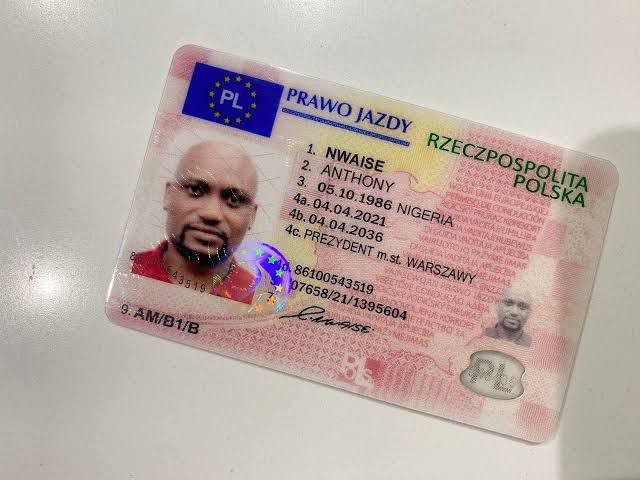A Trip Back In Time How People Talked About Driving License Learning Online 20 Years Ago

Driving License Learning Online: A Comprehensive Guide
In today's hectic world, the necessity of possessing a driving license can not be underestimated. The age of digitalization has changed the method people can get ready for their driving tests. i thought about this learning platforms now offer a convenient and reliable methods of acquiring necessary knowledge and abilities required to pass the driving test. This short article will look into the different elements of driving license learning online, including its benefits, how it works, and what to anticipate.
The Evolution of Driving License Education
Generally, acquiring a driving license included going to physical class sessions along with behind-the-wheel training. Students had to handle traveling to classes and getting practical experience, which could be both lengthy and difficult. However, the intro of online learning has changed this process, making it more available and versatile.
Advantages of Learning to Drive Online
Learning to drive online offers various advantages, consisting of:
- Flexibility: Learners can get ready for their tests at their own rate and convenience, without the rigid scheduling usually associated with standard classes.
- Cost-Effectiveness: Online courses often come at a lower expense compared to in-person direction, making it an attractive option for many.
- Access to Resources: Comprehensive online courses frequently consist of simulations, tests, and training videos that improve the learning experience.
- Updated Information: Online materials are typically updated more regularly, making sure students get the most current information on traffic laws and guidelines.
- Self-Paced Learning: Students can evaluate areas they discover difficult and progress through the material as they master each subject.
How Online Driving Education Works
A lot of online driving courses are structured to provide a thorough learning experience. Below are the normal parts of an online driving course:
1. Enroll in a Course
- Trainees pick an online driving school that suits their requirements and register for a course.
2. Gain Access To Study Materials
- Upon enrollment, learners access to a portal consisting of research study products, including multimedia material, practice tests, and resources on state-specific traffic laws.
3. Study and Complete Instructional Modules
- Courses are broken down into modules that learners must complete. Lots of platforms use video lectures, interactive quizzes, and reading products.
4. Take Practice Tests
- The majority of online learning platforms offer chances to take practice tests, mimicking the actual written driving test. This assists trainees determine their preparedness for the genuine exam.
5. Behind-the-Wheel Training
- While online courses focus on theoretical knowledge, trainees will still need practical driving practice. Many platforms suggest partnering with a knowledgeable driver or enrolling in a regional driving school for hands-on training.
6. Arrange the Driving Exam
- Once students feel positive in their knowledge and abilities, they can schedule a consultation for the written and driving tests with their local automobile department.
Table: Comparison of Online vs. Traditional Driving Learning
| Function | Online Driving Courses | Traditional Driving Schools |
|---|---|---|
| Versatility | High (study at own speed) | Limited (fixed class schedule) |
| Cost | Usually lower | Typically higher |
| Learning Format | Self-directed multimedia | Instructor-led lectures |
| Study Materials | Updated regularly | May not show the current laws |
| Behind-the-Wheel Guidance | Requires external plans | Included in the bundle |
What to Expect from Online Driving Courses
While each online driving course may vary, students can usually anticipate the following:
- Comprehensive Curriculum: Courses cover necessary subjects such as traffic laws, roadway signs, safe driving practices, and protective driving techniques.
- Interactive Learning: Many online courses implement gamification strategies to make learning fun and engaging.
- Assistance: A credible online driving school ought to provide access to trainers via e-mail, chat, or phone for extra support.
Regularly Asked Questions (FAQs)
1. Is online driving education acknowledged by all states?
While many states accept online driving courses for the composed portion of the exam, regulations might differ when it concerns the behind-the-wheel training. It is important for students to validate their state's specific requirements.
2. Can I learn to drive without a physical class?
Yes, you can finish the theoretical portion of driving education entirely online; however, practical driving lessons with a knowledgeable grownup or a certified instructor are important.
3. Are online driving tests the same as in-person tests?
The format of online practice tests typically looks like the real tests, however they might not always be similar to the state-specific driving examinations. Nevertheless, they serve to familiarize students with the test structure and content.
4. Is online driving education suitable for any age groups?
Yes, online driving education is accessible and useful for learners of any ages, whether young adults preparing for their very first driving test or older adults seeking to refresh their skills.
5. What happens if I stop working the online practice tests?
Failing a practice test prevails and shouldn't discourage students. A lot of online courses allow endless efforts to retake tests and tests till a passing grade is attained.
Learning to drive online presents a feasible alternative for many people aiming to acquire their driving license in a flexible and affordable manner. With the development of online education, people can now get ready for their driving tests with ease and confidence. As students navigate this self-paced journey, they can take advantage of extensive resources, engaging material, and the benefit of managing their own schedules. Eventually, whether picking online education or a conventional method, the key stays the commitment to safe driving practices and compliance with regional policies.

